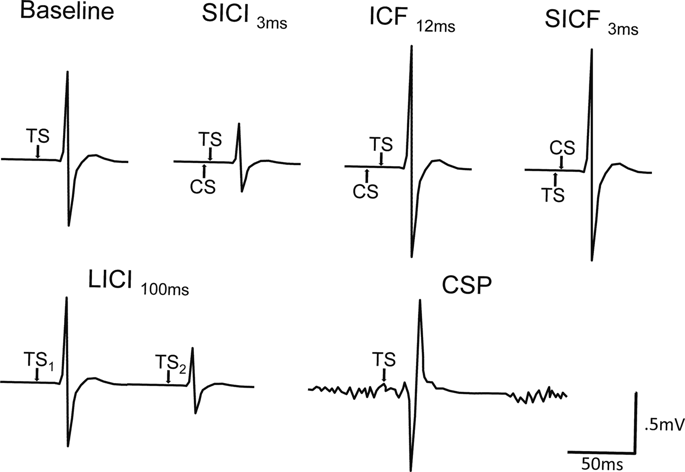当前位置:
X-MOL 学术
›
Transl. Psychiaty
›
论文详情
Our official English website, www.x-mol.net, welcomes your
feedback! (Note: you will need to create a separate account there.)
Hyperexcitability and impaired intracortical inhibition in patients with fragile-X syndrome.
Translational Psychiatry ( IF 5.8 ) Pub Date : 2019-11-20 , DOI: 10.1038/s41398-019-0650-z Florence Morin-Parent 1, 2 , Camille Champigny 2, 3 , Angelina Lacroix 1, 2 , François Corbin 2, 3 , Jean-François Lepage 1, 2
Translational Psychiatry ( IF 5.8 ) Pub Date : 2019-11-20 , DOI: 10.1038/s41398-019-0650-z Florence Morin-Parent 1, 2 , Camille Champigny 2, 3 , Angelina Lacroix 1, 2 , François Corbin 2, 3 , Jean-François Lepage 1, 2
Affiliation

|
Fragile-X syndrome (FXS) is characterized by neurological and psychiatric problems symptomatic of cortical hyperexcitability. Recent animal studies identified deficient γ-aminobutyricacid (GABA) inhibition as a key mechanism for hyperexcitability in FXS, but the GABA system remains largely unexplored in humans with the disorder. The primary objective of this study was to assess GABA-mediated inhibition and its relationship with hyperexcitability in patients with FXS. Transcranial magnetic stimulation (TMS) was used to assess cortical and corticospinal inhibitory and excitatory mechanisms in 18 patients with a molecular diagnosis of FXS and 18 healthy controls. GABA-mediated inhibition was measured with short-interval intracortical inhibition (GABAA), long-interval intracortical inhibition (GABAB), and the corticospinal silent period (GABAA+B). Net intracortical facilitation involving glutamate was assessed with intracortical facilitation, and corticospinal excitability was measured with the resting motor threshold. Results showed that FXS patients had significantly reduced short-interval intracortical inhibition, increased long-interval intracortical inhibition, and increased intracortical facilitation compared to healthy controls. In the FXS group, reduced short-interval intracortical inhibition was associated with heightened intracortical facilitation. Taken together, these results suggest that reduced GABAA inhibition is a plausible mechanism underlying cortical hyperexcitability in patients with FXS. These findings closely match those observed in animal models, supporting the translational validity of these markers for clinical research.
中文翻译:

脆性X综合征患者的过度兴奋和皮质内抑制受损。
脆性X综合征(FXS)的特征是皮质兴奋过度的神经系统和精神病学症状。最近的动物研究发现,缺乏γ-氨基丁酸(GABA)抑制作用是FXS过度兴奋的关键机制,但是在患有这种疾病的人中,GABA系统仍未开发。这项研究的主要目的是评估FXS患者中GABA介导的抑制作用及其与过度兴奋性的关系。经颅磁刺激(TMS)用于评估18名具有FXS分子诊断的患者和18名健康对照的皮质和皮质脊髓抑制和兴奋机制。用短间隔皮质内抑制(GABAA),长间隔皮质内抑制(GABAB)和皮质脊髓静默期(GABAA + B)测量GABA介导的抑制。用皮层内促进评估涉及谷氨酸的净皮层内促进,并用静止运动阈值测量皮质脊髓兴奋性。结果显示,与健康对照组相比,FXS患者的短间隔皮质内抑制明显减少,长间隔皮质内抑制增加,并且皮质内促进作用增强。在FXS组中,短间隔皮质内抑制的减少与皮质内促进的增强相关。综上所述,这些结果表明,降低的GABAA抑制作用是FXS患者皮质过度兴奋性的潜在机制。这些发现与在动物模型中观察到的结果非常匹配,从而支持了这些标记物在临床研究中的翻译有效性。
更新日期:2019-11-20
中文翻译:

脆性X综合征患者的过度兴奋和皮质内抑制受损。
脆性X综合征(FXS)的特征是皮质兴奋过度的神经系统和精神病学症状。最近的动物研究发现,缺乏γ-氨基丁酸(GABA)抑制作用是FXS过度兴奋的关键机制,但是在患有这种疾病的人中,GABA系统仍未开发。这项研究的主要目的是评估FXS患者中GABA介导的抑制作用及其与过度兴奋性的关系。经颅磁刺激(TMS)用于评估18名具有FXS分子诊断的患者和18名健康对照的皮质和皮质脊髓抑制和兴奋机制。用短间隔皮质内抑制(GABAA),长间隔皮质内抑制(GABAB)和皮质脊髓静默期(GABAA + B)测量GABA介导的抑制。用皮层内促进评估涉及谷氨酸的净皮层内促进,并用静止运动阈值测量皮质脊髓兴奋性。结果显示,与健康对照组相比,FXS患者的短间隔皮质内抑制明显减少,长间隔皮质内抑制增加,并且皮质内促进作用增强。在FXS组中,短间隔皮质内抑制的减少与皮质内促进的增强相关。综上所述,这些结果表明,降低的GABAA抑制作用是FXS患者皮质过度兴奋性的潜在机制。这些发现与在动物模型中观察到的结果非常匹配,从而支持了这些标记物在临床研究中的翻译有效性。











































 京公网安备 11010802027423号
京公网安备 11010802027423号